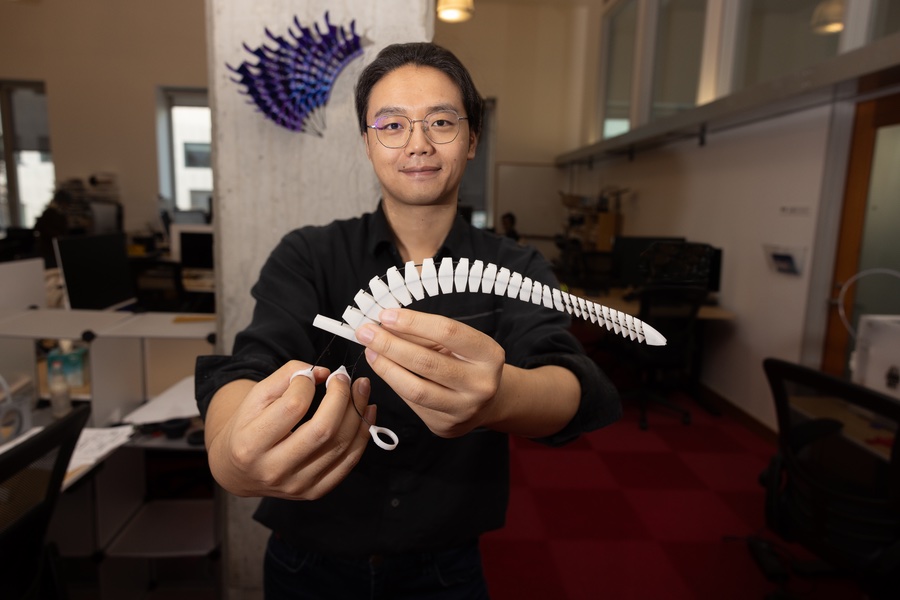A research team from MIT’s Computer Science & Artificial Intelligence Laboratory (CSAIL) has developed a new software tool that makes it easier to design and make cable-driven 3D printed objects. The tool, called Xstrings, can be used to produce a variety of products with embedded actuation, from robotic hands with gripping capabilities to interactive sculptures with animal-like movement.
Cable-driven mechanisms are frequently used by engineers to create components that can move fluidly like a human or animal. This movement is generated by pulling a string that is integrated into a specially designed geometry. As MIT News writes “Take a robotic finger, for example: You could embed a cable through the palm to the fingertip of this object and then pull it to create a curling motion.” The types of movement that can be achieved in cable-driven mechanisms are also versatile, comprising bending, twisting, folding and wrapping.
With practical applications in bionics, fashion and other sectors, these mechanisms have been somewhat limited due to the complexity of making and assembling them. Until now. MIT CSAIL researchers have come up with a method called Xstrings that simplifies the design and fabrication of cable-actuated systems. Using Xstrings, engineers can create 3D printable designs that directly embed all the necessary components—including joints and cables—then bring those designs to life on a multi-material FDM 3D printer.
The Xstrings method can reportedly reduce the time spent making these actuated devices by 40% and open up creation possibilities to a broader number of people. As MIT CSAIL postdoc Jiaji Li, lead author of the Xstrings study, says: “Our innovative method can help anyone design and fabricate cable-driven products with a desktop bi-material 3D printer.”

With the Xstrings software tool, users can input a design and then select the type of movements they want. In the software, there are several movements, or “primitives” to choose from, including bending, coiling, twisting and compressing, as well as adjustable parameters like angle of motion. For more complex movements, primitives can be combined in series (i.e. multiple twists in a snake) or in parallel (i.e. multiple actuated fingers on a robotic hand). Users can also select how cables are integrated into the device and how they are secured.
Once the design is ready, it can then be reproduced on a multi-material extrusion 3D printer. In tests, 3D printed cable-driven prototypes performed promisingly: for example, the strings in one component only broke after being pulled 60,000 times. “The Xstrings software can bring a variety of ideas to life,” concluded Li. “It enables you to produce a bionic robot device like a human hand, mimicking our own gripping capabilities. You can also create interactive art pieces, like a cable-driven sculpture with unique geometries and clothes with adjustable flaps. One day, this technology could enable the rapid, one-step creation of cable-driven robots in outer space, even within highly confined environments such as space stations or extraterrestrial bases.”

